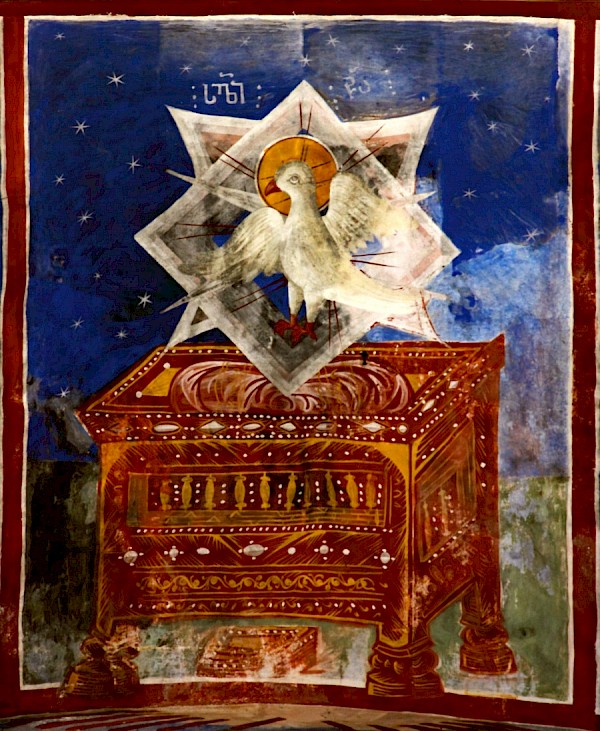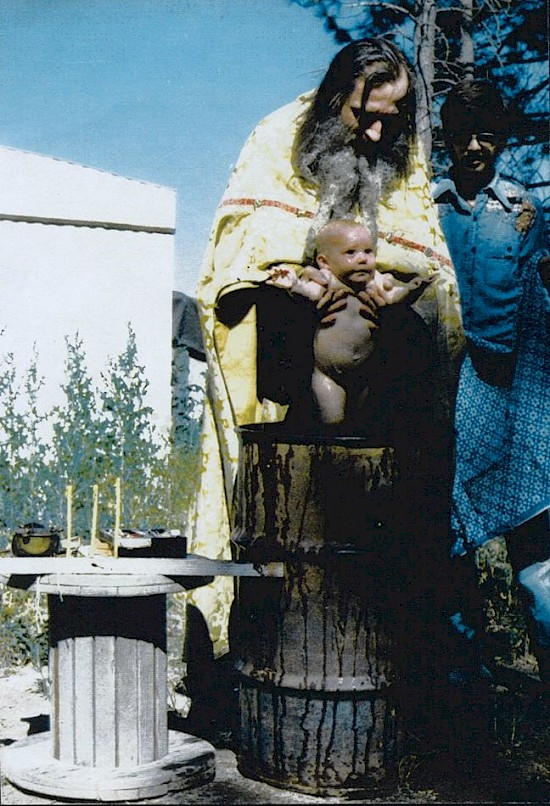
Святой Дух. Фреска монастыря Гелати, Грузия.
Metropolitan Antony wrote this article in the 1920’s, shortly after he left the Crimea and joined the Russian emigration. Religious feelings and strivings were coming to life again among Russians at that time under the influence of the afflictions they had undergone. At this time Vladika Antony considered it essential to elucidate the Church’s teaching about the Holy Spirit. This article was originally published by the American YMCA Press in Paris [in 1927 as "Tserkovnoye ucheniye o Svyatom Dukhe"], but the edition is now extremely rare1. The workings of the Holy Spirit, as described here by this twentieth century Church Father in accordance with the true, traditional Orthodox teaching, will be seen to be very different from the delusions of the contemporary “charismatic movement”.
Misunderstandings2
At the present time many completely untrained writers and thinkers have acquired an itch for theologizing about the most abstruse and abstract questions. They all want to say something new and profound, and, in addition to that, to hint at how unsatisfactory the Church’s teaching is, although they simply do not know it, or, at any rate, do not understand it.
29.05.2018Read more

Letter from Jan. 28/Feb. 10, 1976.
I’ve written and talked to L about this hothouse approach to Orthodoxy – filled with gossip, knowing “what’s going on,” having the “right answer” to everything according to what the “experts” say. I begin to think that this is really her basic problem, and not Fr. Panteleimon directly.
An example: she is horrified that T was received into the Church [from Roman Catholicism] without baptism or chrismation. “That’s wrong,” she says. But we see nothing particularly wrong with it; that is for the priest and bishop to decide, and it is not our (or even more, her) business. The rite by which he was received has long been approved by the Church out of economy, and probably in this case it was the best way, because T might have hesitated much more at being baptized. The Church’s condescension here was wise. But L would like someone “to read Vladika Anthony the decree of the Sobor” [on this subject]. My dear, he was there, composing the decree, which explicitly gives the bishop permission to use economy when he wishes! We don’t like this attitude at all, because it introduces totally unnecessary disturbance into the church atmosphere. And if she is going to tell T now that he is not “really” a member of the Orthodox Church, she could do untold harm to a soul.
28.05.2018Read more

Symbol of the Orthodox Faith. Icon of the XIX century. The State Museum of the History of Religion. St. Petersburg.
The attributes of the Church are innumerable because her attributes are actually the attributes of the Lord Christ, the God-man, and, through Him, those of the Triune Godhead. However, the holy and divinely wise fathers of the Second Ecumenical Council, guided and instructed by the Holy Spirit, reduced them in the ninth article of the Symbol of Faith to four — I believe in one, holy, catholic, and apostolic Church. These attributes of the Church — unity, holiness, catholicity (sobornost), and apostolicity—are derived from the very nature of the Church and of her purpose. They clearly and accurately define the character of the Orthodox Church of Christ whereby, as a theanthropic institution and community, she is distinguishable from any institution or community of the human sort.
27.05.2018Read more


